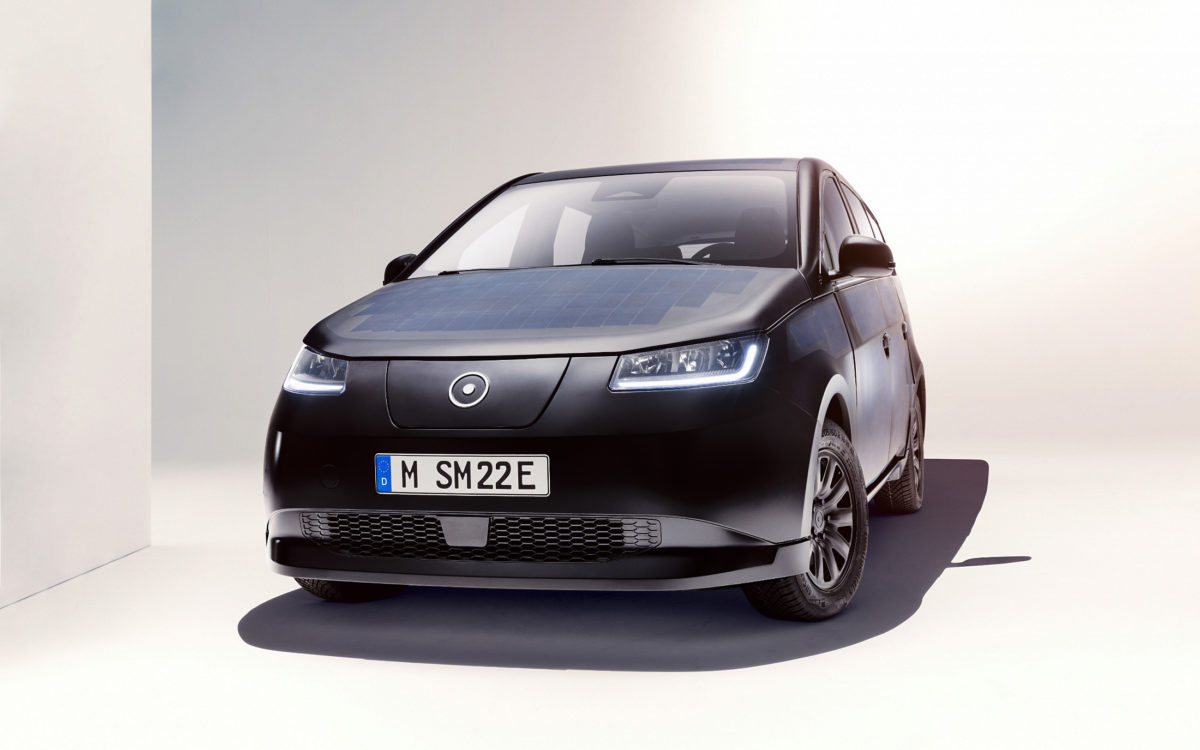Academics from universities in Ukraine, Latvia, and Slovakia have assessed the impact of vehicle-integrated photovoltaics (VIPV) on electric vehicle mileage. They used a 2017 Volkswagen e-Golf 7 series EV in Kyiv to determine the distance that solar electricity could power it on a single, full charge of its battery. They compared the results of a fixed VIPV system to a single-axis tracking system.
The group determined that the vehicle’s available rooftop area was 1,468 mm x 1,135 mm. Based on those dimensions, they assumed the car’s roof could accommodate two 120 W solar panels and one 50 W monocrystalline module from Chinese manufacturer Xinpuguang. They connected the three panels in parallel, resulting in a maximum power of 257.92 W.
The researchers then calculated PV electricity generation on typical days in January, April, July and October. Using data from car tests by the New European Driving Cycle (NEDC) and the US Environmental Protection Agency (EPA), the academics compared the additional distance the EV could travel using solar energy. They assumed the solar modules could only charge the EV batteries while parked.
The results show that the fixed-VIPV system could produce 1,587 Wh of electricity in July, allowing the EV to travel 7.98 km according to the EPA standard, or 12.64 km according to the NEDC.
“These are 3.99% and 6.32% of the maximum range of the trip on a full charge of the battery, respectively,” the scientists said. In January, the fixed system produces 291 Wh, or a range of 1.55 km (EPA) and 2.32 km (NEDC), 0.77% and 1.16% of the maximum range, respectively.
The tracking system produces the same energy as the fixed system in summer, but its yield is superior in spring, autumn, and winter. The best results were in January, when the EV could travel 3.01 km (EPA) or 4.52 km (NEDC), which corresponds to 1.51% and 2.26% of the maximum possible mileage on a single battery charge, respectively.
“The real advantages can be lower than the ones provided … due to the energy spent to adjust the sun-tracking roof platform and to possible constraints preventing perfect orientation,” the authors noted.
While the tracking VIPV system powers the EV for an extra 1.46 km to 2.2 km in January, the solution’s LCOE is 40% higher than the fixed-tilt system’s, the scientists claimed. According to their calculation, the LCOE of the PV system with zero degrees inclination is $0.6654/kWh. For a system with 20 or 80 degrees of inclination, the LCOE is $1.1013/kWh. The payback time of each system is 5.32 and 5.07 years, respectively.
“Given the small difference in the [payback period], an ordinary EV’s driver can be satisfied with the system without inclination adjustment, since a sun-tracking roof platform requires significantly higher initial investment expenditures and makes more difficult the installation,” the scientists concluded.
The scientists described their findings in “Application of photovoltaic panels in electric vehicles to enhance the range,” which was recently published in Heliyon.
This content is protected by copyright and may not be reused. If you want to cooperate with us and would like to reuse some of our content, please contact: editors@pv-magazine.com.








I would point out that the soon to enter manufacturing later in 2023 Aptera SEV already attains a solar productivity of 700w per hour with their full array which in sunny climes like Southern CA can produce over 40 miles of charge per day in optimal conditions.
Of course the solar generation is hyped by the fact the Aptera ‘burns’ less than 100w/mile and can squeeze out 250 miles from a 25kw battery.
The key to solar vehicles is the lightweight Carbon Fiber based monocoque that combines a superlative passenger safety cell that approximates that of a supercar or Formula 1 racer for safety while bringing in a high-efficiency EV that weighs about the same as a Miata.
With the average ‘two-way commute’ in America being roughly 38 miles a day five days a week and Aptera’s solar charging capable of refilling the battery with 30-40 miles a day on average, it would appear the out-of-pocket cost of fueling this vehicle for commuting could be ZERO.
In its least expensive expression, the Aptera includes a 250 mile range with an approximate battery size of 25kw and with full solar as described above, comes in at a cost under $30,000.
A loophole in the Inflation Reduction Act allows commercial leasing of these vehicles to qualify for the $7,500 federal rebate, an arrangement that with the motive of economic development, suggests that consumers may one day look at long-term leases at between $100-$200 mo for the lease and insurance. This could put a ‘commuter special’ vehicle in most every drive-way as an addition to the house hold’s transportation fleet.
the idea is that folks would keep their ICE vehicles for specific uses – family outings where more than one-seat is needed in those counties where 90 percent of the driving is a single person per vehicle and use the Aptera for solo trips including commuting to work and shopping.
Think about it. If you walk out to your driveway and there is an Aptera that
I would point out that the soon to enter manufacturing later in 2023 Aptera SEV already attains a solar productivity of 700w per hour with their full array which in sunny climes like Southern CA can produce over 40 miles of charge per day in optimal conditions.
Of course the solar generation is hyped by the fact the Aptera ‘burns’ less than 100w/mile and can squeeze out 250 miles from a 25kw battery.
The key to solar vehicles is the lightweight Carbon Fiber based monocoque that combines a superlative passenger safety cell that approximates that of a supercar or Formula 1 racer for safety while bringing in a high-efficiency EV that weighs about the same as a Miata.
With the average ‘two-way commute’ in America being roughly 38 miles a day five days a week and Aptera’s solar charging capable of refilling the battery with 30-40 miles a day on average, it would appear the out-of-pocket cost of fueling this vehicle for commuting could be ZERO.
In its least expensive expression, the Aptera includes a 250 mile range with an approximate battery size of 25kw and with full solar as described above, comes in at a cost under $30,000.
A loophole in the Inflation Reduction Act allows commercial leasing of these vehicles to qualify for the $7,500 federal rebate, an arrangement that with the motive of economic development, suggests that consumers may one day look at long-term leases at between $100-$200 mo for the lease and insurance. This could put a ‘commuter special’ vehicle in most every drive-way as an addition to the house hold’s transportation fleet.
the idea is that folks would keep their ICE vehicles for specific uses – family outings where more than one-seat is needed in those counties where 90 percent of the driving is a single person per vehicle and use the Aptera for solo trips including commuting to work and shopping.
Think about it. If you walk out to your driveway and there is an Aptera that won’t cost you but maybe a penny for that five mile RT or your SUV that you know will cost you a dollar for that same trip.
Oh, and your ICE vehicle will decrease in value with the miles while there is no mileage limit (unlike most leases) because the company doing the leasing has as its mission saving the environment and promoting local economic growth. It does the former by its zero-emissions efficiency and the latter by leaving that dollar for that trip to the store in the consumers pocket for spending on other necessities locally.
I did a rough calculation in a suburban county with a target of placing 30,000 aptera in that ‘county’ and the result is that in aggregate, residents of the county would keep about a half-million dollars a day by use of the SEV.
The future of SEV’s is the future.
If solar panels can boost their efficiency by 50% over the next 5 – 7 years (quite possible), then 40 miles a sunny day becomes 60 (which is 100 kms) – enough free travel for many people for a few days to a week. In spring and summer – some people will never have to recharge their car!
The car’s solar generation in kWh per car is a typo I think. Should be Wh.
should be: “…The results show that the fixed-VIPV system could produce 1,587 Wh…in July and … 291 Wh in January” The km shown seems to be accurate though.